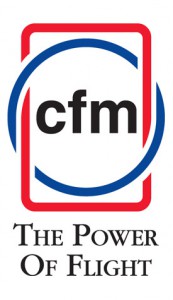 Most people, who aren’t aviation geeks, have probably never heard of CFM International (CFMI). CFMI is a joint venture of GE, of the US, and Snecma, of France, and together they build most successful jet engine ever produced, the CFM56. Over 20,000 CFM56 engines have been built, with production continuing.
Most people, who aren’t aviation geeks, have probably never heard of CFM International (CFMI). CFMI is a joint venture of GE, of the US, and Snecma, of France, and together they build most successful jet engine ever produced, the CFM56. Over 20,000 CFM56 engines have been built, with production continuing.
The CFM56 dates back to 1974 and evolved from technology developed for GE’s F101 power plant for the B-1 bomber. The world’s most successful engine was almost stillborn, as it struggled to find customers until the USAF selected it to re-engine a large portion of the KC-135 fleet. With that foundation the CFM56 was used extensively to re-engine commercial B707 and DC-8 commercial aircraft, as well as on other military C-135/B707 variants.
But the big breakthrough came when Boeing decided to re-engine the B737, replacing the old Pratt & Whitney JT8D of the B737-100/200. The CFM56-3 was selected as the exclusive engine for the B737-300/400/500 family, now called the B737 Classic, and after that the sky was the limit. It has powered every B737 since, with the current B737NG family, the -600/700/800/900, powered by the CFM56-7B. Over 6,000 CFM56-powered B737s have been delivered, with over 2,000 currently on order – and counting.
That alone would be an astonishing record, but the B737′s main competitor, the Airbus A320 family, is also powered by the CFM56-5B. Unlike the B737, it isn’t an exclusive arrangement. The A318 is available with the P&W PW6000 and the A319/A320/A321 are available with the International Aero Engines (IAE) V2500, but the CFM56 has a strong market share in the family. This means the CFM56 powers the two most successful airliner families of all time – the B737 & A320. And the A320 isn’t its only Airbus win; the CFM56-5C exclusively powers the four-engine A340-200/300 widebody as well.
What this all means is that if you’ve flown much at all in your life, you’ve probably flown on an aircraft powered by the CFM56. I did just this past week, as I flew on multiple B737s on a trip out to California.
I’ve been an aviation geek most of my life. Way back in seventh grade, which must’ve been 1983 or so, I did an independent study project on gas turbine engines. I got to visit the maintenance facility at the local Air National Guard base, the 109th Tactical Airlift Group in Schenectady, NY, and poke around in the innards of the Allison T56 turboprops from their C-130s. It was awesome, which just shows you I was a tech geek back then. I collected all kinds of diagrams, illustrations, etc., to use in the presentation, but the teenage me would’ve killed to have these videos. These are exactly the kind of thing I was picturing in my head and struggling to illustrate. And yeah, this whole post is just an excuse to post these.
First is the CFM56-7B, which exclusively powers the Boeing 737NG family:
Next, in a very similiar video, is the CFM56-5B, which powers the Airbus A320 family:
So how do you follow up the world’s most successful jet engine, which has been evolving for over three decades? You take a huge LEAP. Where LEAP stands for Leading Edge Aviation Propulsion, of course.
More specifically, the LEAP-X, CFMI’s new engine being developed to power the A320 NEO (LEAP-X1A), B737 MAX (LEAP-X1B), and China’s new COMAC C919 (LEAP-X1C). The LEAP-X is a major, er, leap forward from the CFM56. A design can only be evolved so far before it is time to start with a clean sheet and create a new design incorporating the latest and greatest technologies, which is exactly what CFMI have done. The LEAP-X will provide much greater fuel economy while at the same time being quieter, producing fewer emissions, and requiring less maintenance than older engines. It is poised to be as great of a success, if not greater, than its older sibling. And being the exclusive power plant for the next generation of the world’s most successful airliner, the B737 MAX, and one of the two options for the second most successful family, the A320, is a good start.




